





Brands often turn to Trend.io for streamlined user-generated content workflows and vetted creator networks, but many are now exploring alternatives. Common cons include limited niche coverage, rigid credit-based pricing models that make ROI tracking a headache, and an overwhelming array of creators without strong filtering—prompting marketers to look for better targeting, budget clarity, and analytics control.
This article taps into the most recent 2025 industry reports from Stack Influence, G2, and Shopify ecosystem studies to compare platforms.
We'll highlight key attributes like influencer discovery, campaign automation, pricing models, analytics dashboards, and how each aligns with DTC growth needs. You’ll learn not just what each tool offers, but how those features translate into smarter, scalable influencer strategies.
Top 10 Trend.io Alternatives we’ll explore:
Based on our research, Trend.io is praised for its ease of use and the professional look of much of the content it helps brands generate. However, for some companies—especially those needing more flexible pricing, stronger support, or access to niche creators—the drawbacks can outweigh the benefits.
Trend.io runs on a credit model, requiring businesses to purchase minimum bundles (starting at $500) just to get started. Costs per creator quickly escalate, making ROI tracking and budget forecasting difficult. Many reviews describe the system as restrictive and confusing, especially for smaller D2C brands with tighter budgets.
Users report a lack of vetted creators in high-demand verticals like fitness, nutrition, and wellness. The fixed payment tiers frustrate both brands and creators—established influencers often prefer to negotiate based on engagement and analytics rather than being locked into pre-set campaign fees. Some reviews also mention lower pay rates compared to other platforms, which can discourage high-quality creators from joining.
Several marketers flagged inconsistent creator quality, with some content described as “inauthentic” or low production value (e.g., skincare niches). Limited campaign types (such as being restricted in how posts are structured—image vs. video) reduce flexibility in testing formats. These restrictions can limit creative freedom, making it harder for brands to tailor campaigns to their audience goals.
Multiple reviews highlight poor customer support, with cases where influencers failed to deliver content and refunds were denied or ignored. For D2C brands operating on lean budgets, lack of recourse when campaigns fail is a major risk factor.
Our comparison focuses on several key aspects:
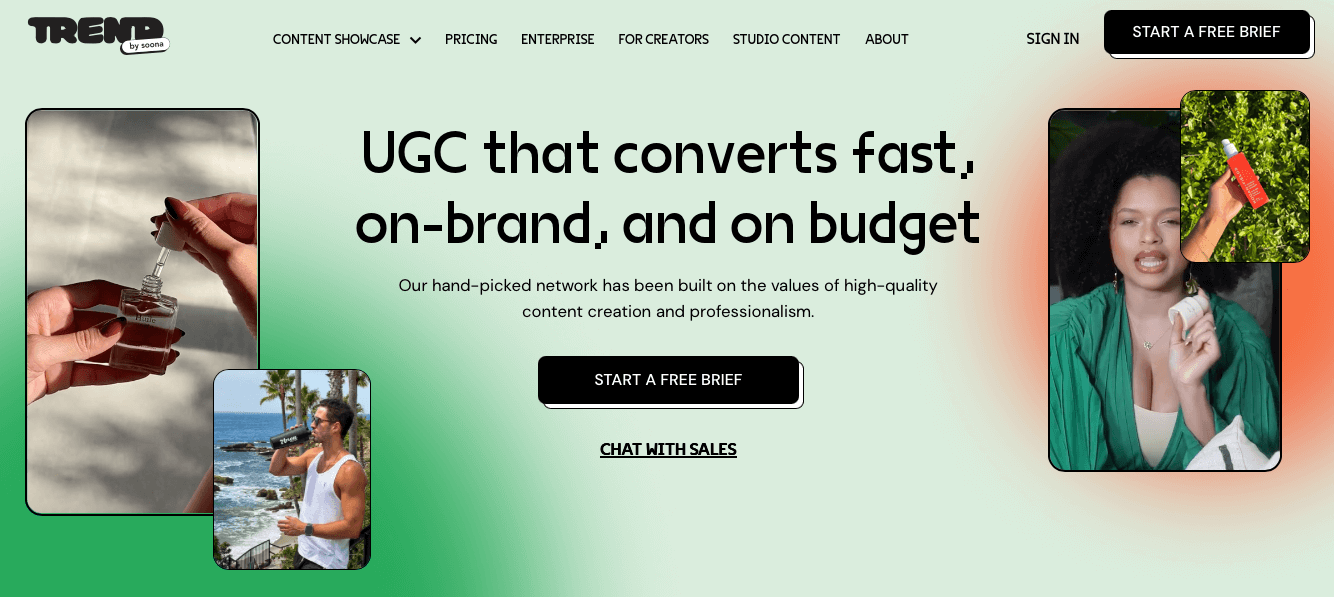
Best For: Trend.io is best for D2C brands, Shopify stores, and eCommerce businesses that want a steady flow of authentic, creator-produced content without handling negotiations or influencer coordination. It’s especially suited for teams focused on content libraries for paid ads, organic social, and product marketing.
Platform Coverage: Instagram, TikTok, Facebook and YouTube ads, as well as Shopify and eCommerce storefronts.
Pricing: Trend.io has four pricing tiers:
Reviews: 4.5 / 5.0 (G2)
Ease of Use (UX/UI): Marketers generally describe Trend.io’s platform as straightforward and intuitive, with a simple project creation process (create → approve creator → ship product → receive content). Many highlight the time savings compared to manual influencer search and negotiation.
Customer Support: Officially, Trend.io offers 24/7 support via chat, email, call, and video with personalized onboarding. In practice, several reviews describe poor responsiveness, unreturned refunds, and lack of accountability when creators fail to deliver content. This inconsistency makes customer support one of the most frequently cited weaknesses.
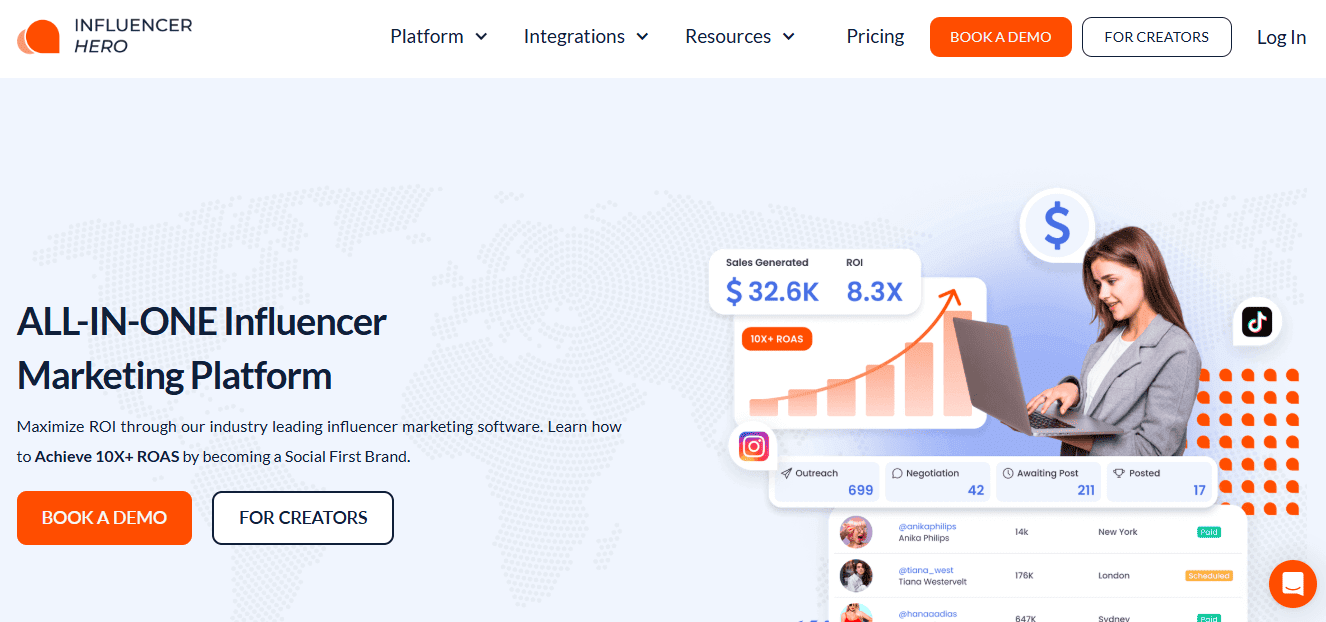
Best For: Influencer Hero is best for D2C brands, eCommerce businesses, and scaling teams that want an all-in-one platform combining discovery, outreach, CRM, UGC management, and ROI tracking.
Platform Coverage:
Pricing: Influencer Hero has four pricing tiers:
All plans include full access to Influencer Hero’s discovery, CRM, reporting, gifting, and automation tools, with pricing based on creator contact limits rather than credits.
Reviews: 5.0 / 5.0 (Capterra)
Ease of Use (UX/UI): The platform is known for its intuitive design and streamlined workflows, featuring drag-and-drop campaign setup, automated email templates, and customizable outreach flows. The dashboard provides real-time performance visibility, while the Chrome Extension enables one-click imports directly from social platforms.
Customer Support: Influencer Hero delivers best-in-class support with 24/7 real-human live chat, responsive email help, and a dedicated Help Center packed with written and video tutorials. Every plan includes a dedicated account manager from day one, with optional strategy consultations to help optimize campaigns. Pro plan users also gain access to a private Slack channel for continuous, rapid support.
While Trend.io focuses mainly on delivering user-generated content through a credit-based system, Influencer Hero offers a true all-in-one influencer marketing platform. With Trend.io, brands face restrictions like a $500 minimum credit bundle and limited flexibility in campaign types. Influencer Hero, by contrast, uses clear, contact-based pricing that scales with brand needs, starting at $649/month for 1,000 creators.
Influencer Hero also goes beyond UGC by providing advanced discovery filters, AI-powered outreach, CRM management, affiliate tracking, gifting automation, and storefronts—capabilities Trend.io doesn’t match. For growing D2C brands that need full-funnel influencer marketing rather than just content creation, Influencer Hero positions itself as the stronger long-term solution.
In short, Trend.io may work for brands seeking quick, affordable content, but Influencer Hero is the better choice for businesses that want to scale influencer partnerships, measure ROI, and streamline every step of the campaign process.
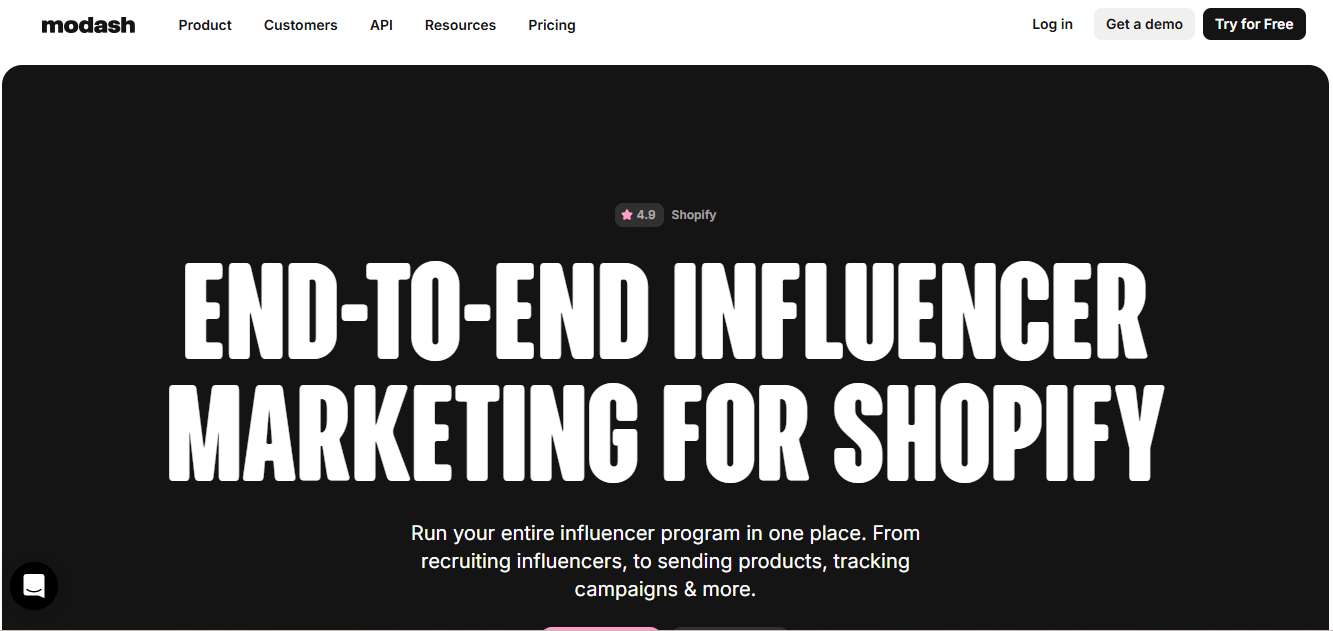
Best For: Modash is best for eCommerce and D2C brands that rely on Shopify and want to manage discovery, outreach, affiliate campaigns, and payments all in one place. It’s particularly well-suited for teams prioritizing data-rich influencer discovery and real-time campaign tracking.
Platform Coverage: Instagram, TikTok and YouTube. It offers limited support for X and Snapchat.
Pricing: Offers three main plans:
Both monthly and annual billing options are available, with annual plans saving ~16%.
Reviews: 4.7 / 5.0 (G2)
Ease of Use (UX/UI): Marketers describe Modash’s interface as clean and straightforward, with discovery, outreach, and tracking tools consolidated in a logical workflow. Filters for location, audience demographics, and niche topics make discovery efficient, while the CRM-style lists and bulk outreach functions streamline management.
Customer Support: Users note that Modash offers responsive onboarding and customer success support with helpful training during setup. However, unlike some competitors, Modash does not emphasize 24/7 live chat or dedicated account managers for all tiers, which some brands view as a limitation compared to higher-touch platforms.
Modash Standout Features:
Trend.io focuses primarily on user-generated content creation, with pricing built around a credit system where brands pay per creator hired. This works well for brands that only need a steady flow of content but makes ROI forecasting difficult and often locks companies into $500+ minimum spends.
By contrast, Modash is an end-to-end influencer marketing platform with a strong emphasis on discovery, outreach, affiliate tracking, and campaign analytics. Instead of credits, Modash uses monthly/annual subscription plans starting at $199, making it easier for brands to budget and scale. While Trend.io delivers standardized UGC, Modash empowers teams to find niche creators, track performance, and automate payments—capabilities Trend.io lacks.
For D2C and Shopify-based brands, Modash is generally the stronger choice. Trend.io can be a fit if the priority is simply fast, affordable UGC content, but Modash offers the data depth, campaign control, and scalability needed for long-term influencer marketing success.
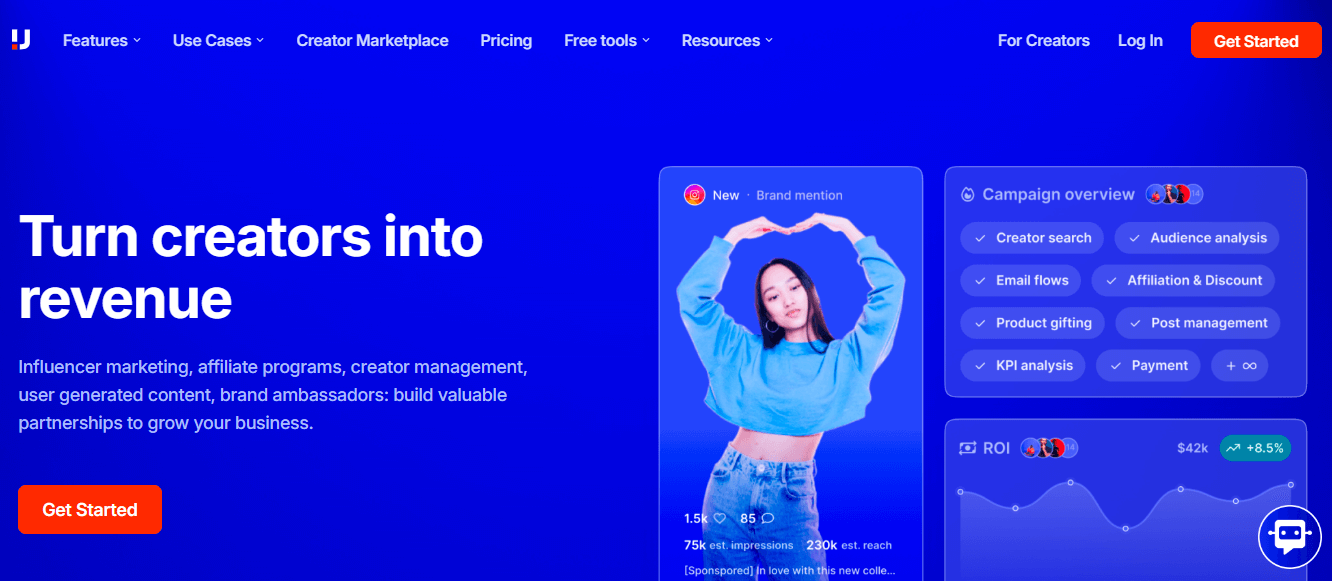
Best For: Upfluence is best for eCommerce brands and online retailers that want to connect influencer marketing directly with sales performance. Its Shopify and Amazon integrations make it especially powerful for businesses that prioritize ROI and want to turn existing customers into brand advocates.
Platform Coverage: Instagram, TikTok, YouTube, X (Twitter), Twitch, Pinterest, and WordPress blogs
Pricing: Upfluence costs $1,276/month on an annual contract (billed monthly). Brands can reduce the cost by removing the “Payments” feature ($399/month) if they only work with gifting. The total yearly cost is $16,007, or $14,406 if paid upfront.
Reviews: 4.3 / 5.0 (Capterra)
Ease of Use (UX/UI): Users find the platform feature-rich and intuitive once set up, with strong reporting dashboards and centralized campaign management. However, some new users mention a steeper learning curve due to the large number of capabilities, particularly when managing integrations across Shopify and Amazon.
Customer Support: Upfluence provides dedicated customer support with onboarding assistance, tutorials, and responsive ticket-based help. While many users appreciate the detailed guidance, some reviews mention slower support response times during busy periods compared to competitors.
While both platforms cater to influencer discovery and campaign execution, they differ significantly in scope and pricing. Trend.io is a credit-based marketplace where brands can purchase content from micro-influencers, making it cheaper upfront but limited in flexibility. It’s best suited for smaller brands that want quick access to user-generated content without long-term commitments.
In contrast, Upfluence operates as a full-scale influencer marketing platform, combining discovery, outreach, campaign management, affiliate tracking, and even payment solutions. Its Shopify and Amazon integrations allow businesses to directly attribute influencer efforts to sales—something Trend.io lacks. However, this comes at a higher cost ($1,276/month) and with annual contract obligations.
For brands prioritizing ROI tracking and eCommerce integrations, Upfluence is the stronger choice. For those seeking budget-friendly content creation and one-off influencer partnerships, Trend.io may be more appealing.
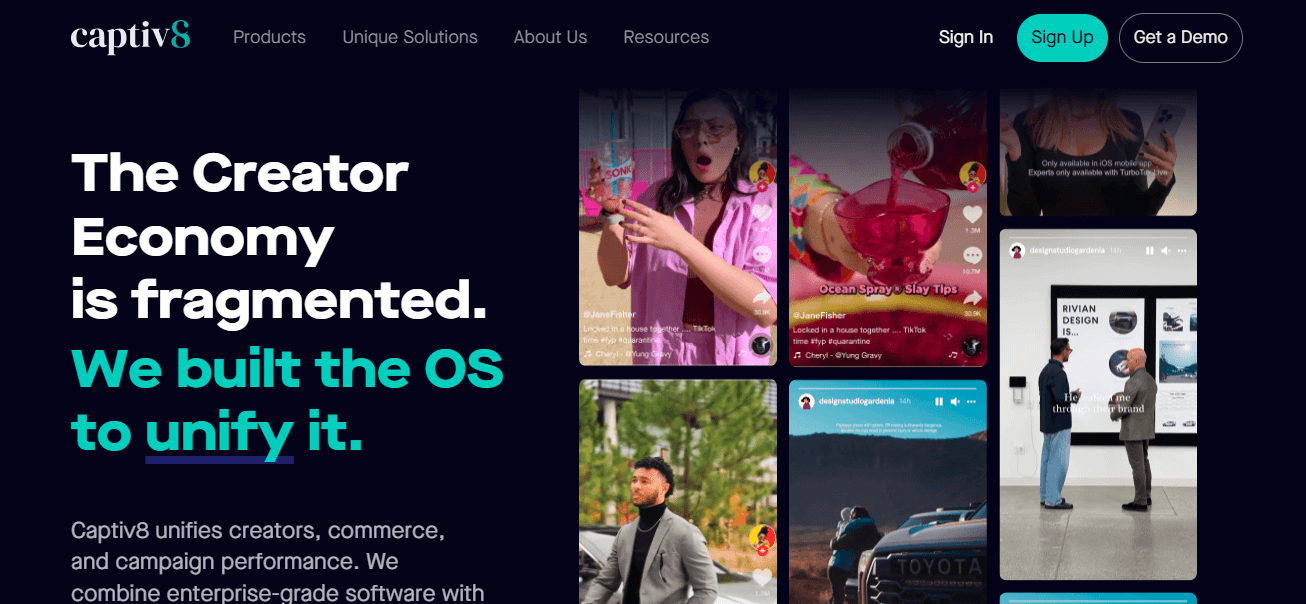
Best For: Captiv8 is best for enterprise brands and large-scale organizations looking to run complex, data-driven influencer campaigns with deep analytics, competitor tracking, and multi-team collaboration.
Platform Coverage: Instagram, TikTok, YouTube, Facebook, Twitter (X), Snapchat, and Twitch.
Pricing:
Captiv8 does not currently offer monthly or flexible subscription options, making it a heavier investment compared to mid-market solutions
Reviews: 4.5/5.0 (Capterra)
Ease of Use (UX/UI): Users note that Captiv8 offers a robust but complex dashboard. Features like drag-and-drop reporting and reusable filter locks make campaign management easier, but the breadth of features can feel overwhelming for smaller teams.
Customer Support: Customer support is often cited as a weak point. While Captiv8 offers onboarding and enterprise-level account management, many users report slow response times and unresolved issues related to payments and account management. This is a common theme across independent reviews and Reddit threads.
When comparing Trend.io with Captiv8, the biggest differences come down to pricing and accessibility. Trend.io focuses on affordable, flexible plans designed for small and mid-sized businesses, making influencer marketing more accessible to startups and growing eCommerce brands.
Captiv8, on the other hand, is geared toward enterprise clients with budgets starting at $25K annually plus additional fees. Captiv8 offers deeper analytics, sentiment tracking, and enterprise-level features like storefronts and affiliate programs. However, these capabilities come with a steep cost and are often overkill for brands that don’t need large-scale influencer programs.
In short, choose Captiv8 if you’re an enterprise brand with complex global campaigns and the budget to invest in deep data capabilities. Choose Trend.io if you’re a small to mid-sized brand looking for affordable influencer management with flexible pricing.

Best For: CreatorIQ is best for large enterprises, global brands, and agencies managing high-volume, multi-market influencer campaigns that require advanced compliance, scalable workflows, and strategic support.
Platform Coverage: Instagram, TikTok, YouTube, Facebook, Pinterest, Twitch, and X (Twitter)
Pricing: CreatorIQ only offers annual contracts, with pricing typically ranging between $2,000–$5,000 per month, depending on scale and features.
Reviews: 4.4 / 5.0 (Capterra)
Ease of Use (UX/UI): Users describe CreatorIQ’s interface as comprehensive but data-heavy. The dashboards are highly customizable and executive-ready, but the learning curve can be steep for teams unfamiliar with large-scale influencer software.
Customer Support: CreatorIQ is consistently praised for its dedicated implementation managers and customer success teams. Users mention strategic support beyond technical help — including onboarding, quarterly planning, and campaign strategy sessions.
While both Trend.io and CreatorIQ are influencer marketing platforms, they serve very different markets and use cases.
Trend.io focuses on smaller to mid-sized brands, especially eCommerce, by offering content creation at scale with vetted creators. CreatorIQ, on the other hand, is an enterprise-grade solution. It supports global teams with end-to-end campaign management, compliance, and advanced data through direct API integrations. However, the platform requires a long-term commitment (annual contracts) and significantly higher budgets ($2K–$5K/month vs Trend.io’s content-per-project pricing).
In short:
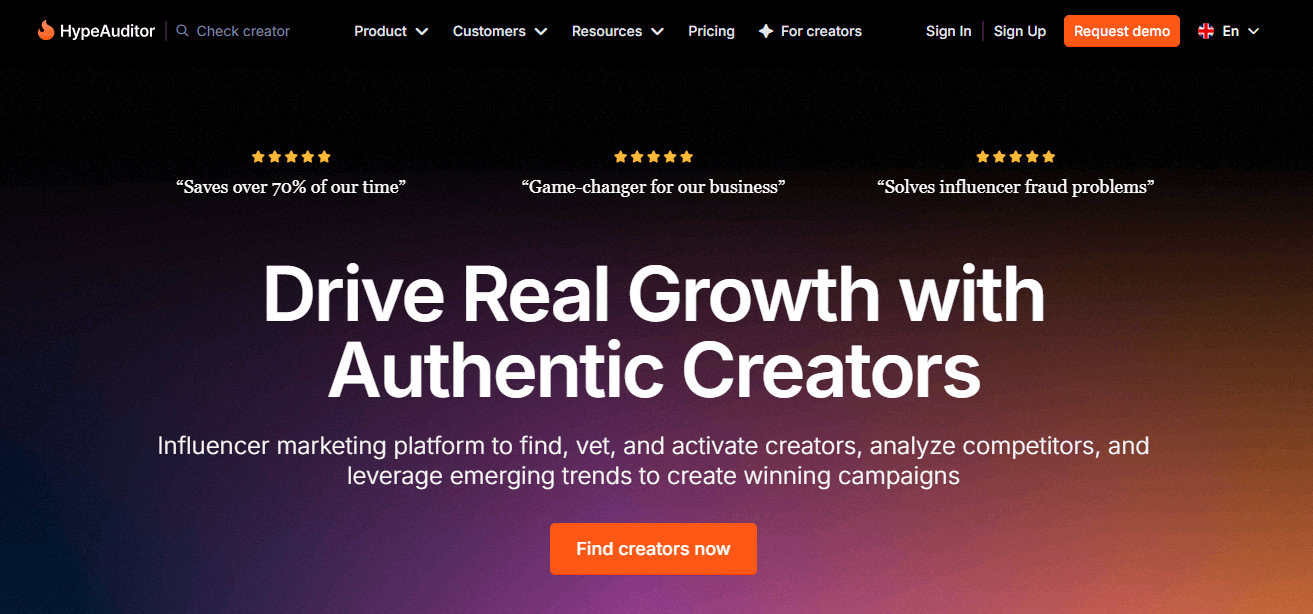
Best For: HypeAuditor is best for brands and agencies that prioritize influencer authenticity and campaign performance tracking, particularly eCommerce brands seeking fraud detection, detailed audience insights, and ROI-driven campaigns.
Platform Coverage: Instagram, TikTok, YouTube, Twitch, X (Twitter), and Snapchat.
Pricing:
Reviews: 4.8/5.0 (Capterra)
Ease of Use (UX/UI): Users describe the interface as professional and data-heavy, offering deep filtering and reporting options. While powerful, it can feel complex for beginners, requiring onboarding to fully utilize all features.
Customer Support: HypeAuditor provides dedicated onboarding and responsive customer service, especially for enterprise users. Support includes training sessions and technical guidance. However, smaller teams have noted that self-service resources could be more extensive, meaning new users often rely on direct support for setup.
The main difference between Trend.io and HypeAuditor comes down to pricing and focus. Trend.io is designed to be affordable and accessible, making it ideal for startups and mid-sized brands looking to scale quickly with UGC and creator-driven content. Its flexible pricing and simple setup make it a go-to for brands prioritizing content creation over deep analytics.
HypeAuditor, on the other hand, is a data powerhouse. It’s built for enterprises and agencies that need advanced influencer discovery, fraud detection, campaign ROI tracking, and cross-platform analytics. While its starting price is significantly higher (~$10K/year), it provides a much more comprehensive toolkit for brands focused on performance-driven influencer marketing.
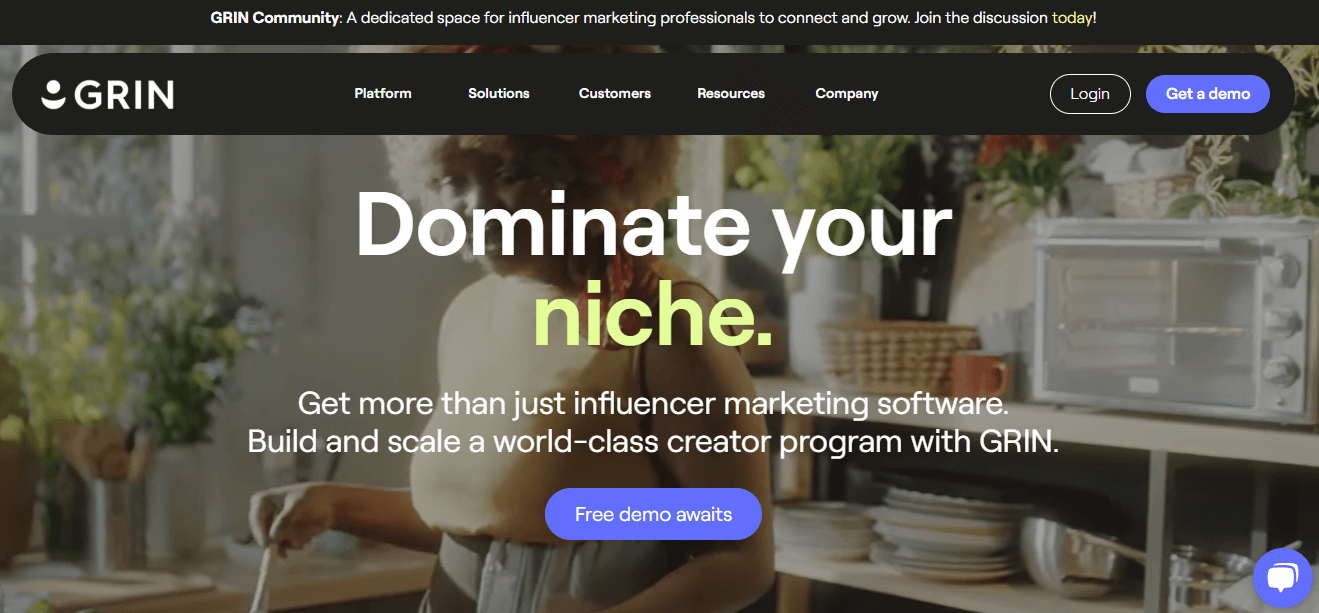
Best For: GRIN is best for DTC and eCommerce brands that want to run end-to-end influencer programs—including product seeding, affiliate tracking, gifting, and UGC collection—inside a single unified platform.
Platform Coverage: Instagram, TikTok, YouTube, X (Twitter), Twitch, and Snapchat.
Pricing: GRIN pricing starts at around $2,500/month ($25,000/year) with a minimum 12-month commitment. Costs can scale up to $10,000+/month depending on features, creator volume, and campaign needs.
Reviews: 4.5 / 5.0 (G2)
Ease of Use (UX/UI): Most users highlight GRIN’s centralized workflow as a major time saver—allowing gifting, contracts, content approval, and payments to happen within one system. The content library is highly valued for simplifying UGC reuse. However, some report slow loading times and glitches, which can affect usability during high-volume campaigns.
Customer Support: GRIN provides dedicated program strategists for brands that want extra hands-on support, acting as an extension of in-house teams. Many customers rate support as helpful and knowledgeable, though some reviews mention slow responses and unresolved tickets, especially around billing and technical bugs.
When comparing Trend.io vs Grin, the biggest difference comes down to pricing and scale. Trend.io is priced for accessibility, starting at $100/month with flexible month-to-month options. It’s best suited for small to mid-sized brands that want to source creators for UGC and run lightweight campaigns without committing to long-term, high-cost contracts.
Grin, on the other hand, starts at $2,500/month ($25,000/year) and requires an annual commitment. It’s built for established eCommerce brands with large product catalogs and the need for integrated gifting, affiliate tracking, and UGC management at scale.
In short: choose Trend.io if you’re testing influencer marketing, need UGC quickly, or want
low-commitment pricing. Choose Grin if you’re an established brand running large-scale influencer programs and need a centralized system that ties directly into your eCommerce backend and revenue tracking.

Best For: Brands, agencies, and organizations seeking a centralized hub to collect, manage, and repurpose UGC—especially for embedding across websites, product pages, and digital signage. It’s also ideal for teams wanting to gain creator-sourced social proof or drive social commerce without the complexity of a full-fledged influencer CRM.
Platform Coverage: Instagram, TikTok, LinkedIn, X (Twitter), and YouTube.
Pricing: Taggbox offers four tiered subscription plans, billed monthly:
Reviews: 4.8 / 5.0 (G2)
Ease of Use (UX/UI): Setup is generally straightforward for building multi-network feeds, moderating content, embedding widgets, and monitoring performance. However, the backend can be unintuitive at first - some settings require multiple clicks, making the learning curve slightly steeper for new users.
Customer Support: Paid-plan users benefit from responsive support (chat and call on higher tiers), supported by helpful documentation and video tutorials. Free-plan users receive limited support, and occasional feed or update delays can require direct coordination with support during time-sensitive projects.
While Trend.io offers a credit-based system for scaling UGC creation through creators—ideal for fast content generation—Taggbox focuses on aggregating and repurposing existing UGC across channels and displays. Trend.io helps brands source new creator content, whereas Taggbox empowers teams to manage and deploy social proof and user content across digital touchpoints efficiently.
Pricing-wise, Trend.io tends to be budget-flexible (pay-per-content model), while Taggbox offers entry-level plans starting at just $19/month, making it an affordable option for brands wanting to get started quickly with UGC display and rights control.
In short:
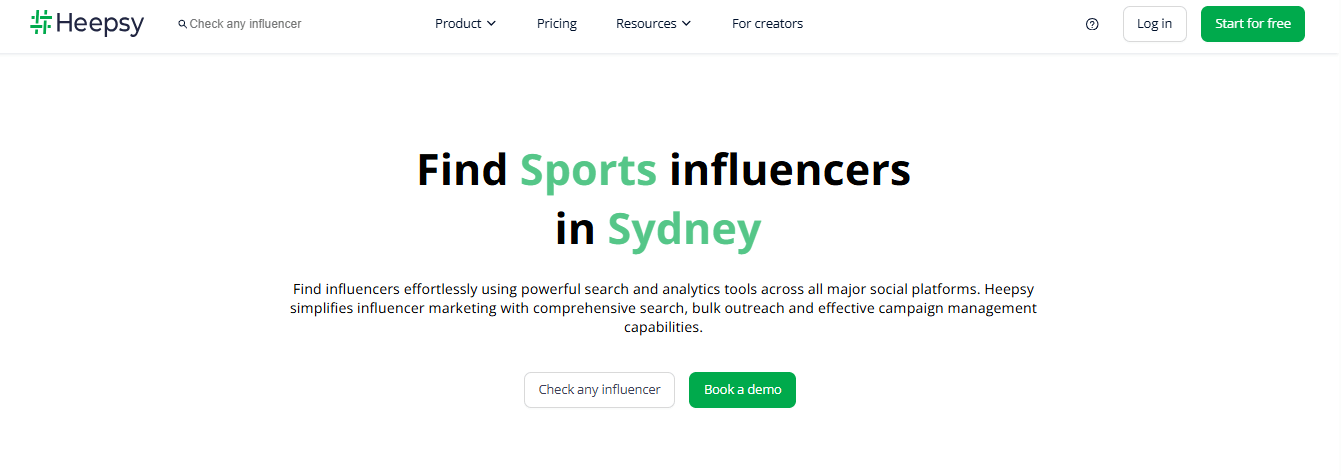
Best For: Heepsy is best for eCommerce brands and agencies looking to find influencers quickly and handle high-volume bulk outreach and campaign tracking—especially those integrated with Shopify for affiliate and sales monitoring.
Platform Coverage: Instagram, TikTok, and YouTube.
Pricing: Heepsy offers four plan tiers (monthly billing):
Reviews: 4.5 / 5 (G2)
Ease of Use (UX/UI): Heepsy is widely described as intuitive, clean, and fast to learn—particularly the multi-filter search and Kanban-style workflow. However, some advanced search features are limited on lower-tier plans.
Customer Support: Users appreciate Heepsy’s highly responsive and personalized onboarding, including email/chat support and outreach template assistance. Some reviews note limited support for free users and occasional issues with refunds or billing.
Both platforms help brands with influencer discovery and campaigns, but serve different needs Trend.io excels in scalable UGC creation using a credit-based system—better suited for small to mid-sized brands looking to source fresh creator content quickly and cost-effectively.
Heepsy, however, offers high-volume influencer discovery, streamlined bulk outreach, and a simple CRM. With its affordable pricing starting around $89/month and strong Shopify integration, it's ideal for brands focused on efficient workflow over content creation.
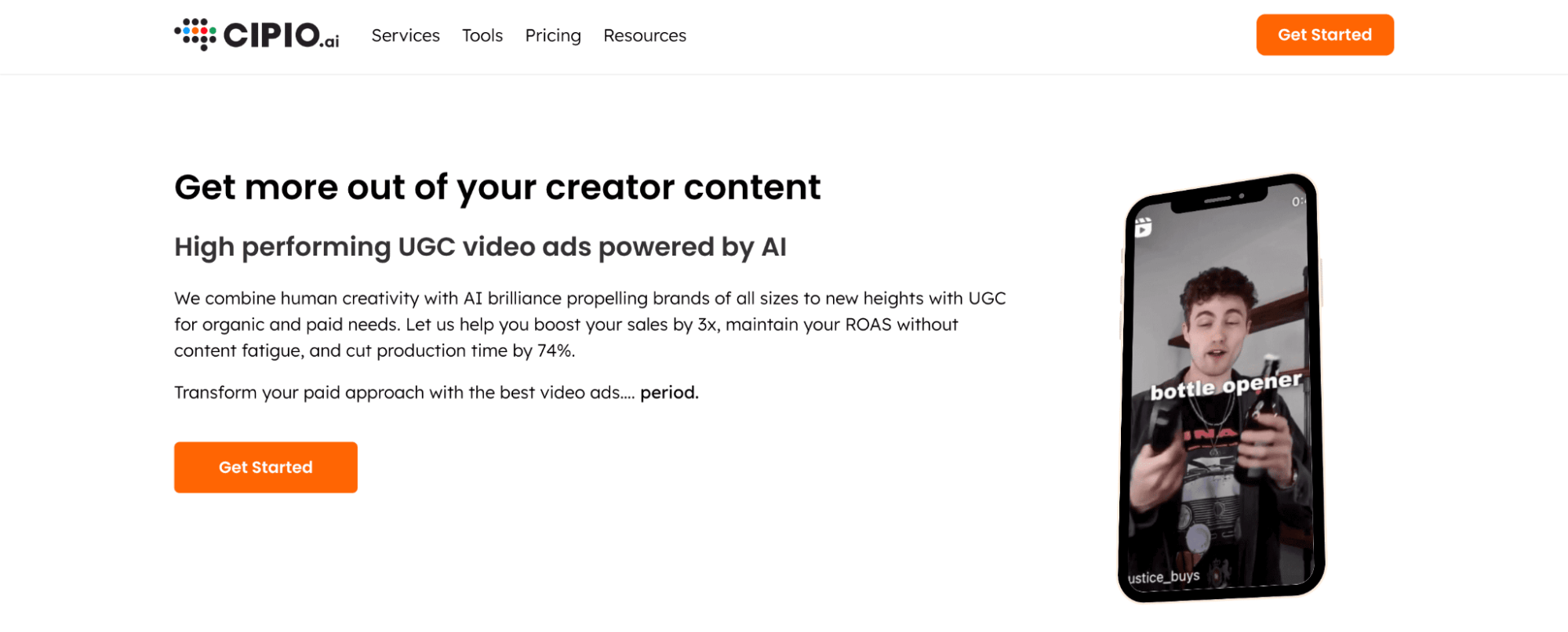
Best For: Cipio is best suited for eCommerce brands on Shopify or Amazon that want to scale influencer gifting and turn UGC into high-performing paid ads without managing creator communication and logistics in-house. It’s ideal for lean teams prioritizing ROAS-driven creative production over a full self-serve CRM.
Platform Coverage: Cipio focuses primarily on Instagram, but the UGC created on the platform can be repurposed across Facebook, TikTok, YouTube, and paid social ads.
Pricing: Cipio offers three flexible pricing models:
Reviews: 4.9 / 5.0 (Glassdoor)
Ease of Use (UX/UI): Users describe Cipio’s interface as clean and straightforward, though it lacks advanced customization and self-serve dashboards for influencer discovery, campaign management, or reporting. This may feel limiting for marketers who prefer hands-on control. However, the streamlined setup appeals to teams that value speed and simplicity.
Customer Support: Cipio’s account managers are frequently praised for being responsive, proactive, and solution-oriented. They handle creator sourcing, negotiations, and content delivery efficiently, though some clients note they would prefer more visibility into creator interactions instead of relying entirely on Cipio’s internal team.
When comparing Trend.io and Cipio, the most notable difference lies in pricing and service model. Trend.io operates with a simple subscription-based pricing structure starting at $100/month, making it highly accessible for smaller brands or those testing influencer campaigns.
Cipio, on the other hand, follows a pay-per-creator and ad model, which can quickly scale in cost but offers a higher degree of creative testing and ad optimization. Another difference is in self-serve control vs managed service. Trend.io provides a self-serve dashboard for influencer discovery, campaign management, and tracking—ideal for brands that want to stay hands-on. Cipio, however, is heavily managed-service oriented, meaning brands offload creator sourcing, logistics, and campaign execution to Cipio’s team.
In short, Trend.io is the better choice for brands on a budget or those who want to control influencer relationships directly. Cipio is best for brands scaling paid ads with UGC and seeking a done-for-you solution where the focus is on performance and ROAS rather than full in-house influencer management.
When evaluating Trend.io alternatives, it becomes clear that each platform offers its own strengths depending on a brand’s priorities. Some tools, like Cipio, lean heavily on managed services and UGC-to-ad optimization, while others such as Grin or CreatorIQ provide more robust CRMs with advanced campaign management, analytics, and integrations. Platforms like HypeAuditor shine with in-depth audience insights and fraud detection, whereas others, including Captiv8, stand out for marketplace-style scalability and automation.
The choice ultimately comes down to whether a brand values affordability, self-serve flexibility, or a more done-for-you approach.
Among all options, Influencer Hero emerges as one of the best alternatives because it strikes the right balance between usability, depth, and scalability. With features spanning influencer discovery, outreach, affiliate tracking, gifting management, and detailed reporting, it provides an all-in-one solution that eliminates the need for multiple fragmented tools.
For brands looking to streamline workflows while keeping full control over influencer relationships, Influencer Hero represents a strong and versatile platform to scale influencer campaigns effectively.

One of the best alternatives to Trend.io is Influencer Hero, thanks to its all-in-one approach. Unlike Trend.io, which focuses primarily on influencer gifting and UGC, Influencer Hero covers the full influencer marketing workflow—including discovery, outreach, affiliate tracking, gifting, CRM, and reporting.
Other strong alternatives include Grin, CreatorIQ, and HypeAuditor, depending on whether you prioritize campaign management, analytics, or audience verification.
Trend.io specializes in influencer-generated content and gifting campaigns, making it a good option for brands focused mainly on acquiring UGC. Influencer Hero, on the other hand, goes beyond gifting by offering end-to-end campaign management, robust analytics, and affiliate tracking.
For eCommerce brands looking to scale campaigns and track ROI, Influencer Hero is generally the more comprehensive choice.
If budget is the main concern, Trend.io itself can be cost-effective for small-scale campaigns. However, Influencer Hero offers affordable plans starting at $649/month, which provide access to influencer search filters, CRM, and affiliate/gifting tools in one platform—making it a better long-term investment for small businesses.
Other affordable alternatives include Heepsy for influencer discovery and Modash for simpler campaign setups.
When comparing Trend.io alternatives, key features to look for include:
Yes. While Trend.io is great for UGC-driven campaigns, its scope is more limited compared to alternatives. Platforms like Influencer Hero, CreatorIQ, and Grin are designed for scalability, allowing brands to work with hundreds or even thousands of influencers while tracking ROI.
Influencer Hero stands out because it supports affiliate programs and product seeding at scale, making it ideal for brands looking to grow beyond one-off UGC campaigns.



Schedule a Demo with one of our media experts below.